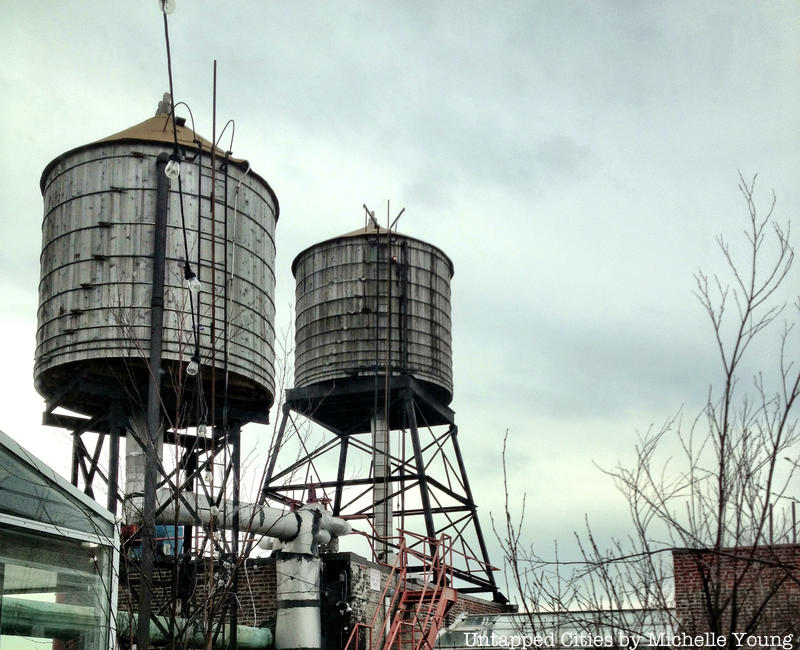
Welcome to our new series, Cities 101, which will answer questions about how the city’s infrastructure works. First up: Watertowers.
Water towers figure prominently in New York City’s skyline, with their familiar conical shape protruding among the blocky skyscrapers. They first became popular in the city in the late 19th century, as buildings grew taller. With the early skyscrapers came a need to deliver water to the upper floors without risk of high pressure bursting a pipe. Today, we may think of these tanks as “technology” of a past age, and look to them more as a decorative part of the city landscape. Still, it’s worth looking past their aesthetic and sentimental aspects to their remarkably simple, yet effective technology.
According to Kate Asher in The Works: Anatomy of a City, in New York, the street mains system can push water 60 feet (or 6 floors) from the ground with a pressure of 50-60 pounds per square inch. With a water tank storing water on the building’s roof, gravity does the work in distributing water to the lower floors. The tank is filled with water from the mains system by basement pumps, and as the tank empties, it triggers the pumps to refill it. In this way, the tower acts as both a water source and reservoir.
This diagram from The Works shows the mechanism of the water tower:
The early water towers were constructed from wooden planks with cedar planks without any glue to join them. They’re held together simply by the pressure of steel hoops that encase the boards. The wood acts as a natural insulator that keeps the water from freezing in cold weather, with “roughly the insulation of 30 inches of concrete,” according to Ascher.
A water tank has a life of 30-35 years. There are only three companies in the city that construct wooden water tanks: Rosenwach Tank Company, Isseks Brothers, and American Pipe and Tank. All are family run businesses, the first two have been in business for over one hundred years.
Even though newer buildings use more modern basement pump systems, roughly 10,000 to 15,000 water tanks are still used throughout the city. And take a close look at even some of the tallest residential buildings around you–you can often see the tip of the watertower peeking out. In the event of a failed pump, there’s no more reliable source than water tanks–and beyond their functionality, there still remains a certain romanticism about water tanks and what they symbolize for New Yorkers. As far as their iconic status in New York City, Tom Fruin’s glass watertower in Brooklyn Bridge Park and the watertower speakeasy epitomized our fascination with watertowers.
Stay tuned for our new series, Cities 101. Next up: Do crosswalk buttons actually work?





